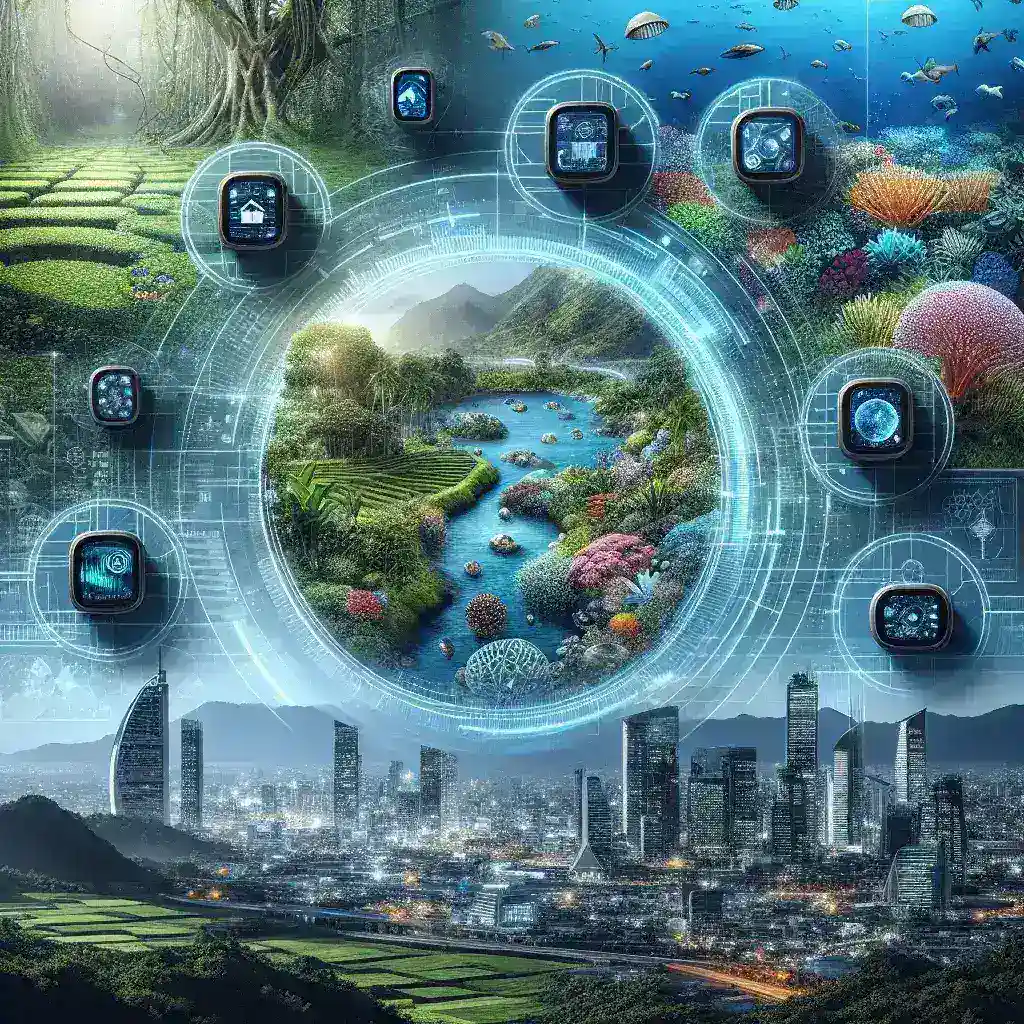Introduction
In today’s rapidly changing world, the need for effective environmental monitoring has never been more crucial. From tracking air quality to observing climate change, accurate and timely data is essential to drive policy changes and inform the public. Smart sensors are at the forefront of this evolution; these sophisticated devices are changing the landscape of environmental monitoring by offering enhanced data collection, real-time insights, and improved efficiency.
What Are Smart Sensors?
Smart sensors are electronic devices that collect data from the environment and transmit it for analysis. They utilize various technologies, including IoT (Internet of Things), artificial intelligence, and machine learning, to provide actionable insights. Unlike traditional sensors, which often require manual handling and analysis, smart sensors automate these processes, enabling continuous monitoring.
Key Features of Smart Sensors
- Real-time Data Collection: Smart sensors can gather data continuously, allowing for instantaneous monitoring of environmental conditions.
- Remote Accessibility: Because they are often connected to the internet, data can be accessed from anywhere in the world.
- Data Analytics: Advanced algorithms can analyze data immediately, identifying trends and anomalies as they occur.
- Integration Capabilities: Smart sensors can work in conjunction with other systems, providing a holistic view of environmental data.
Applications of Smart Sensors in Environmental Monitoring
Smart sensors are being deployed in various applications that are transforming how we monitor and manage our environment. Below are some notable applications:
1. Air Quality Monitoring
Air quality has become a pressing concern globally. Traditional methods of monitoring air pollutants are often slow and limited in coverage. Smart sensors, however, can be deployed across urban and rural areas, providing real-time data on pollutants like NO2, CO2, and PM2.5. For instance:
- Smart sensors can detect pollution sources, contributing to targeted interventions.
- They support public health initiatives by alerting citizens when pollution levels are hazardous.
- Data collected can influence urban planning and regulations aimed at reducing emissions.
2. Water Quality Monitoring
Water contamination remains a severe global issue. Smart sensors can continuously monitor water bodies for a range of parameters such as pH levels, turbidity, and the presence of heavy metals. Key benefits include:
- Early detection of contaminants, enabling prompt remediation efforts.
- Real-time analysis aids in protecting aquatic ecosystems and preserving biodiversity.
- Data can help municipalities optimize water treatment processes, ensuring safer drinking water.
3. Climate and Weather Monitoring
Weather patterns are becoming increasingly erratic due to climate change. Smart weather sensors can provide accurate and localized data, leading to better forecasting. Key uses include:
- Supporting agricultural practices through precise weather forecasts, enhancing crop yield.
- Enabling disaster preparedness by offering advanced warnings for extreme weather events.
- Contributing to climate research by generating vast amounts of data for analysis.
4. Wildlife and Habitat Monitoring
Smart sensors play a critical role in the conservation of wildlife and habitats. They are used in:
- Tracking animal movements, helping to understand migration patterns and behaviors.
- Monitoring habitat changes and identifying threats to biodiversity.
- Facilitating research on endangered species and ecosystems.
Advantages of Smart Sensors in Environmental Monitoring
The integration of smart sensors in environmental monitoring comes with several advantages:
1. Enhanced Accuracy
Smart sensors provide data with greater precision, reducing the likelihood of errors associated with manual monitoring. This accuracy is crucial when making informed decisions regarding environmental policies and interventions.
2. Cost-Effectiveness
Although the initial investment in smart sensors may be high, the overall costs can be reduced due to:
- Lower operational and maintenance expenses.
- Minimized need for extensive manual checks.
- Improved efficiency leading to quicker responses to environmental issues.
3. Improved Data Collection and Management
The data collected by smart sensors can be managed and analyzed efficiently using advanced software. This leads to better data visualization, enabling stakeholders to grasp complex information quickly.
4. Strengthening Community Engagement
Smart sensors can empower communities to take part in environmental monitoring. Engaging citizens in data collection can lead to greater awareness and actions on local environmental issues.
Challenges Facing Smart Sensors in Environmental Monitoring
Despite their numerous benefits, smart sensors also face several challenges:
1. Data Privacy and Security
The data collected by smart sensors may raise concerns regarding privacy and security. Protecting sensitive information, especially that which involves public health, is paramount.
2. High Initial Investment
Many organizations may face budget constraints when considering the initial costs of implementing smart sensor technology.
3. Standardization Issues
As smart sensors come in various forms and functionalities, establishing standard protocols for data collection and transmission poses a challenge.
4. Environmental Conditions
Smart sensors can be affected by extreme weather conditions, which may hinder their performance and reliability.
Future of Smart Sensors in Environmental Monitoring
As technology continues to evolve, the future of smart sensors in environmental monitoring looks promising:
1. Integration with Emerging Technologies
The integration of smart sensors with technologies such as artificial intelligence and 5G connectivity will enhance data transmission speeds and analysis capabilities.
2. Increased Adoption in Developing Countries
As the cost of technology decreases, we can expect wider adoption of smart sensors in developing nations, helping to address environmental challenges.
3. Global Collaboration
Collaborative efforts between governments, private entities, and non-profit organizations will drive progress in sensor technology and best practices for data usage.
4. Community-Led Initiatives
Local communities will continue to play a significant role in environmental monitoring, supported by smart sensor technology for grassroots initiatives.
Conclusion
Smart sensors are undeniably transforming environmental monitoring by delivering accurate data in real-time, enhancing efficiency, and promoting community engagement. While there are challenges ahead, continuous advancements in technology and global cooperation will pave the way for more effective environmental stewardship. Embracing smart sensors is not just a technological shift; it’s a commitment to a sustainable future.

